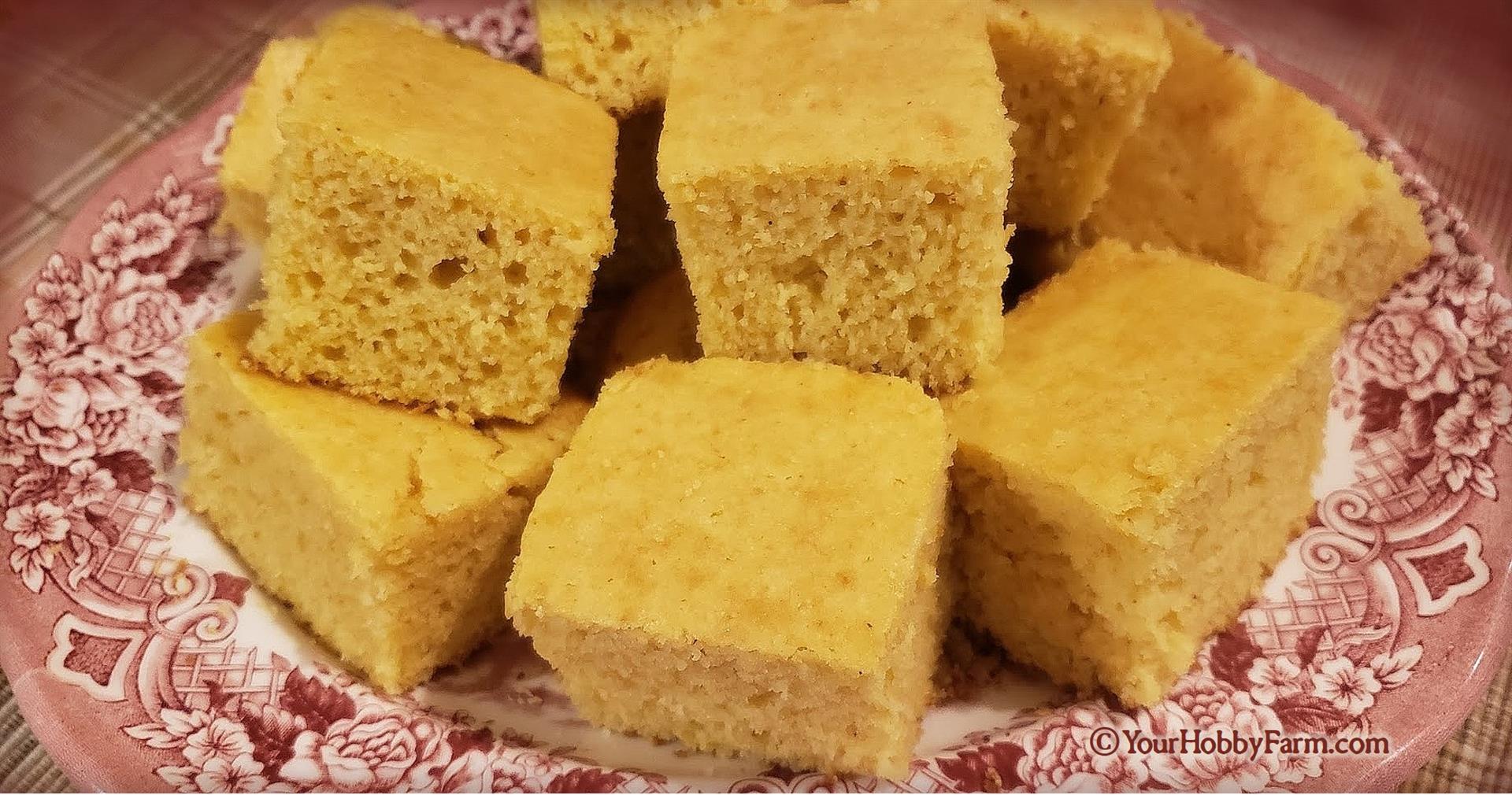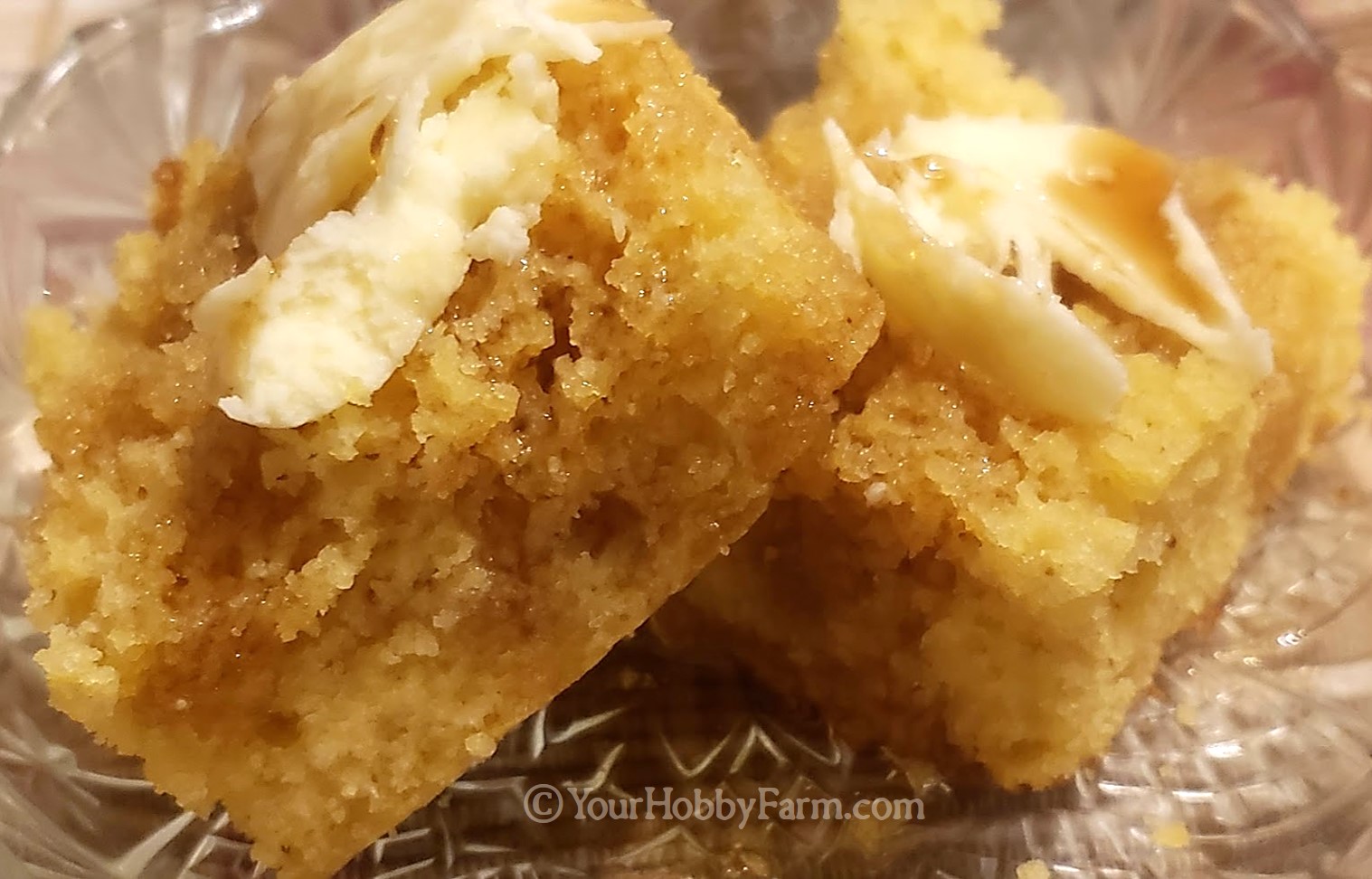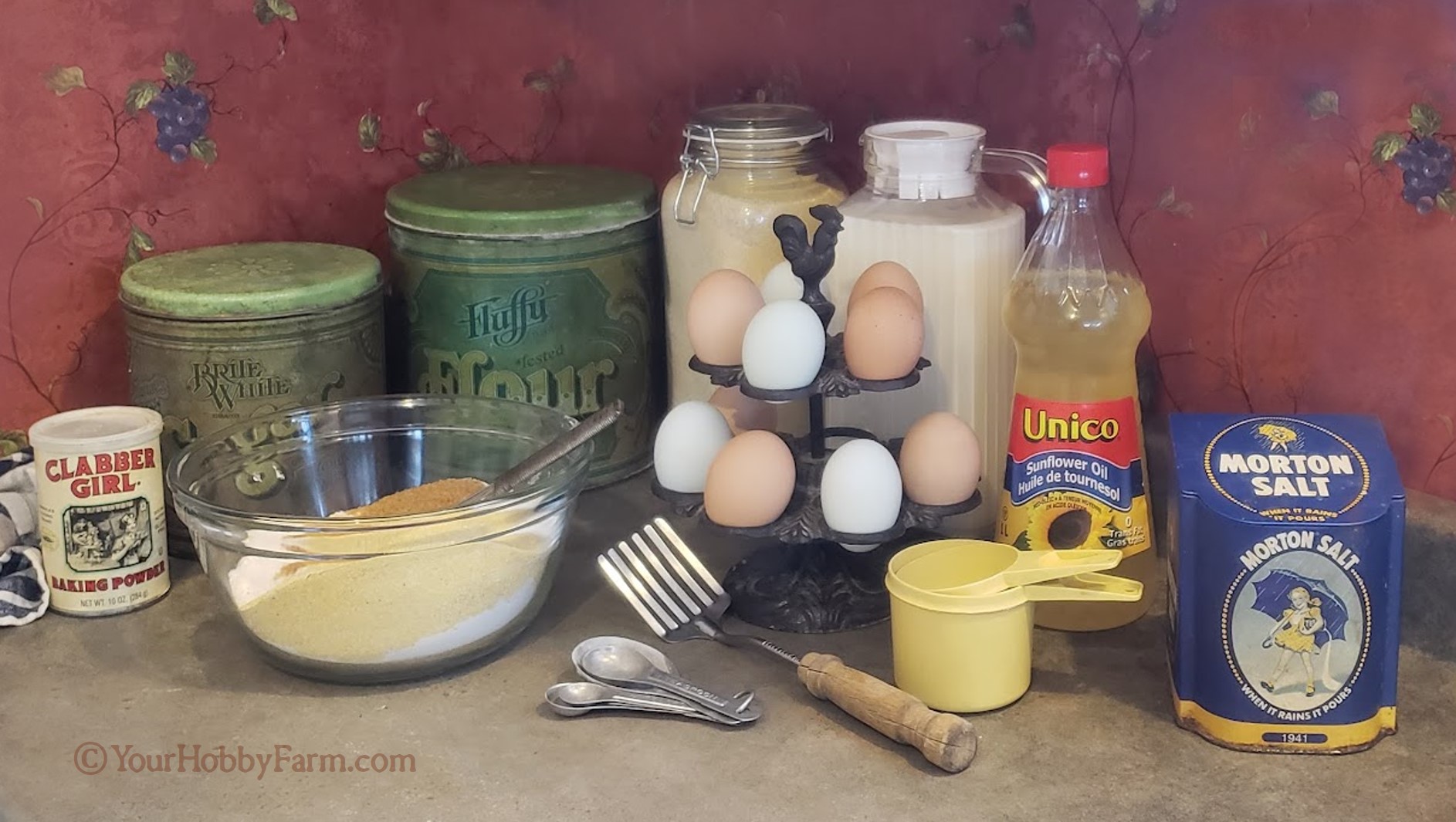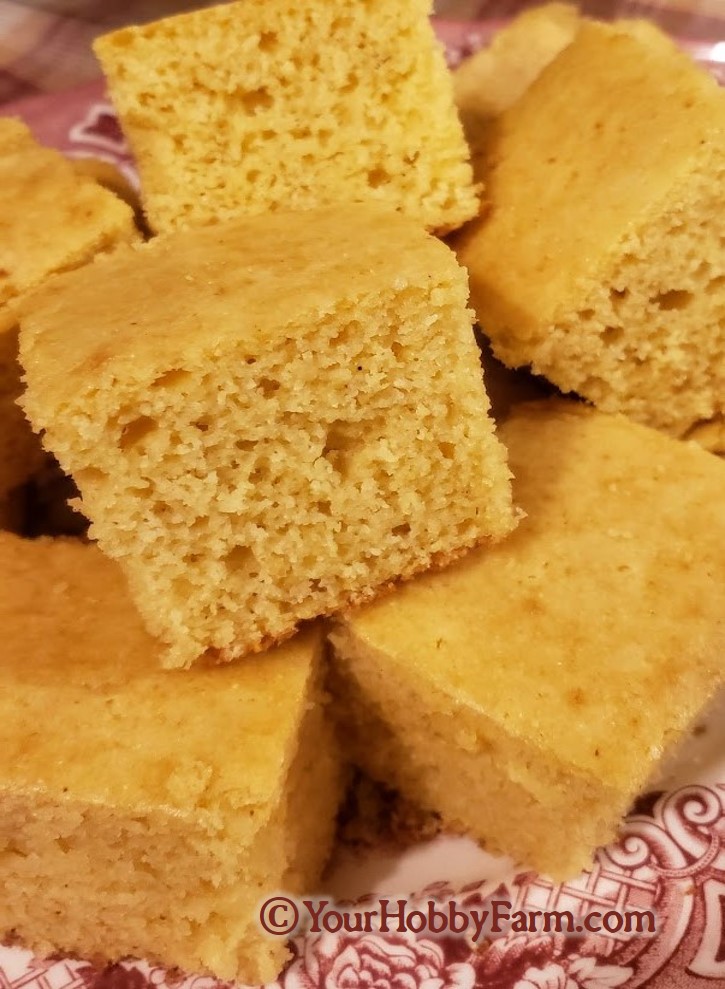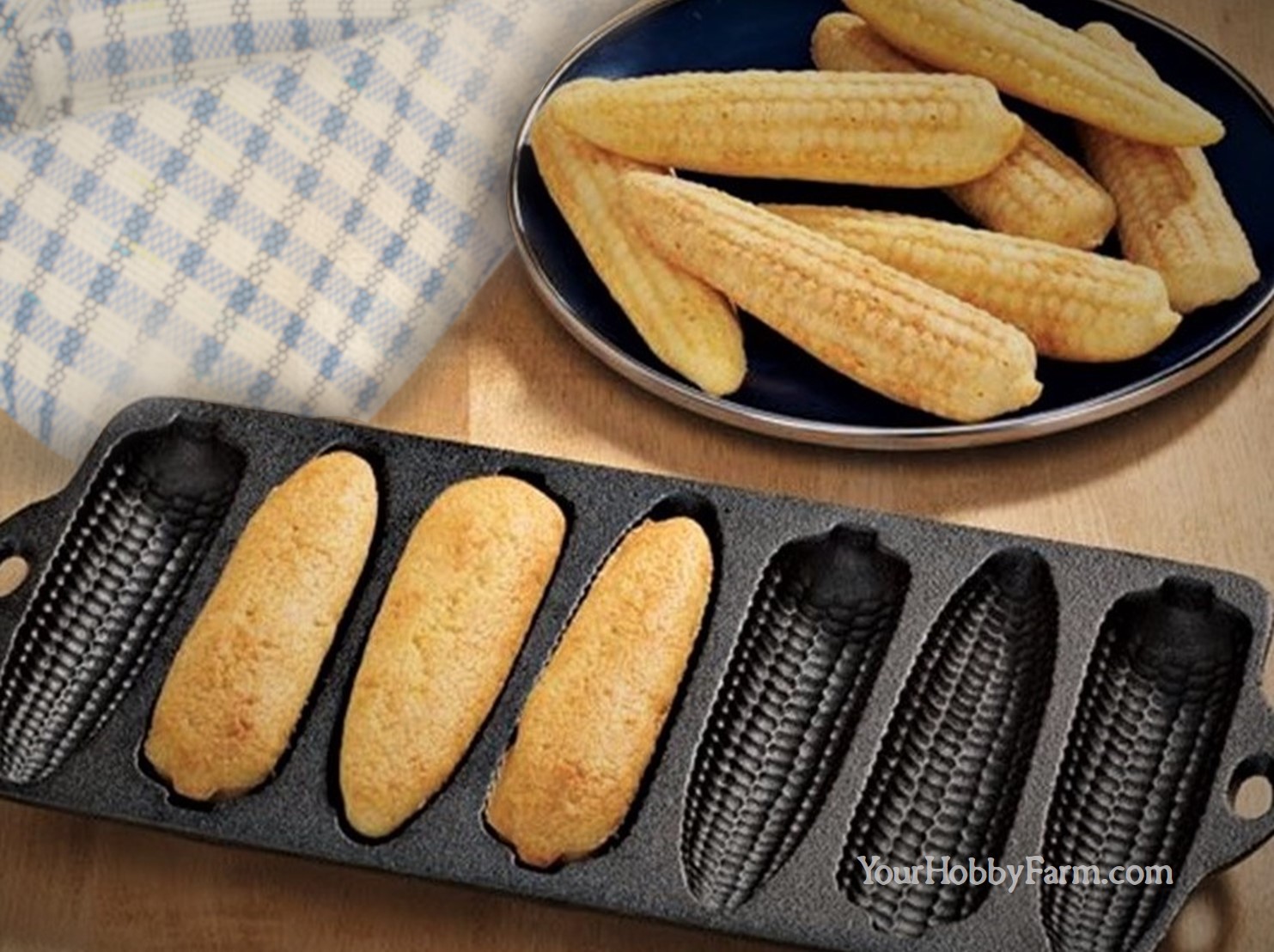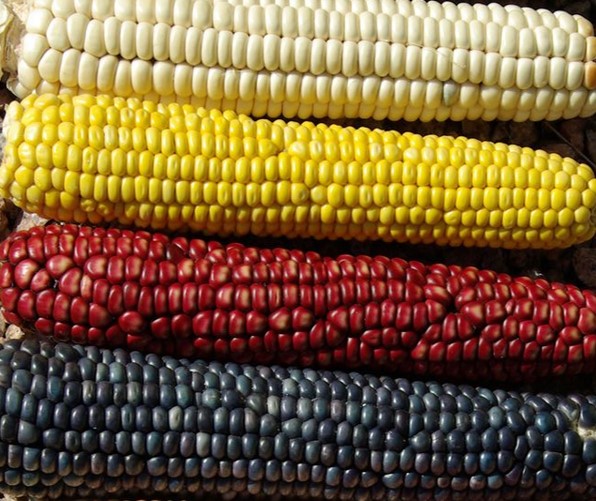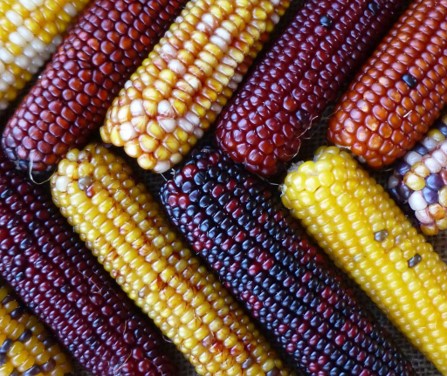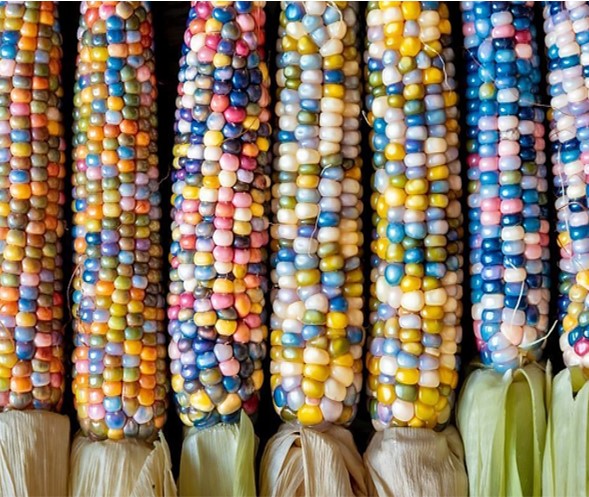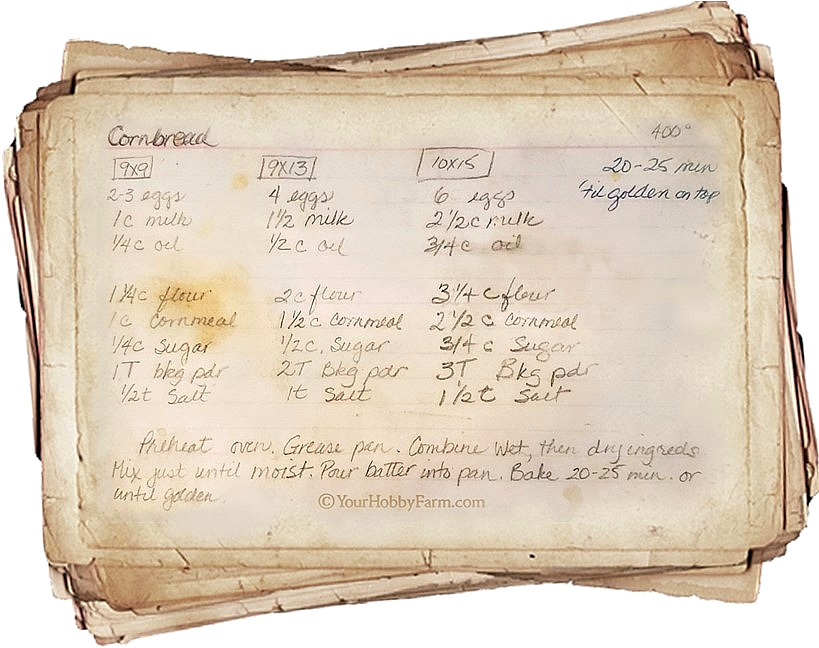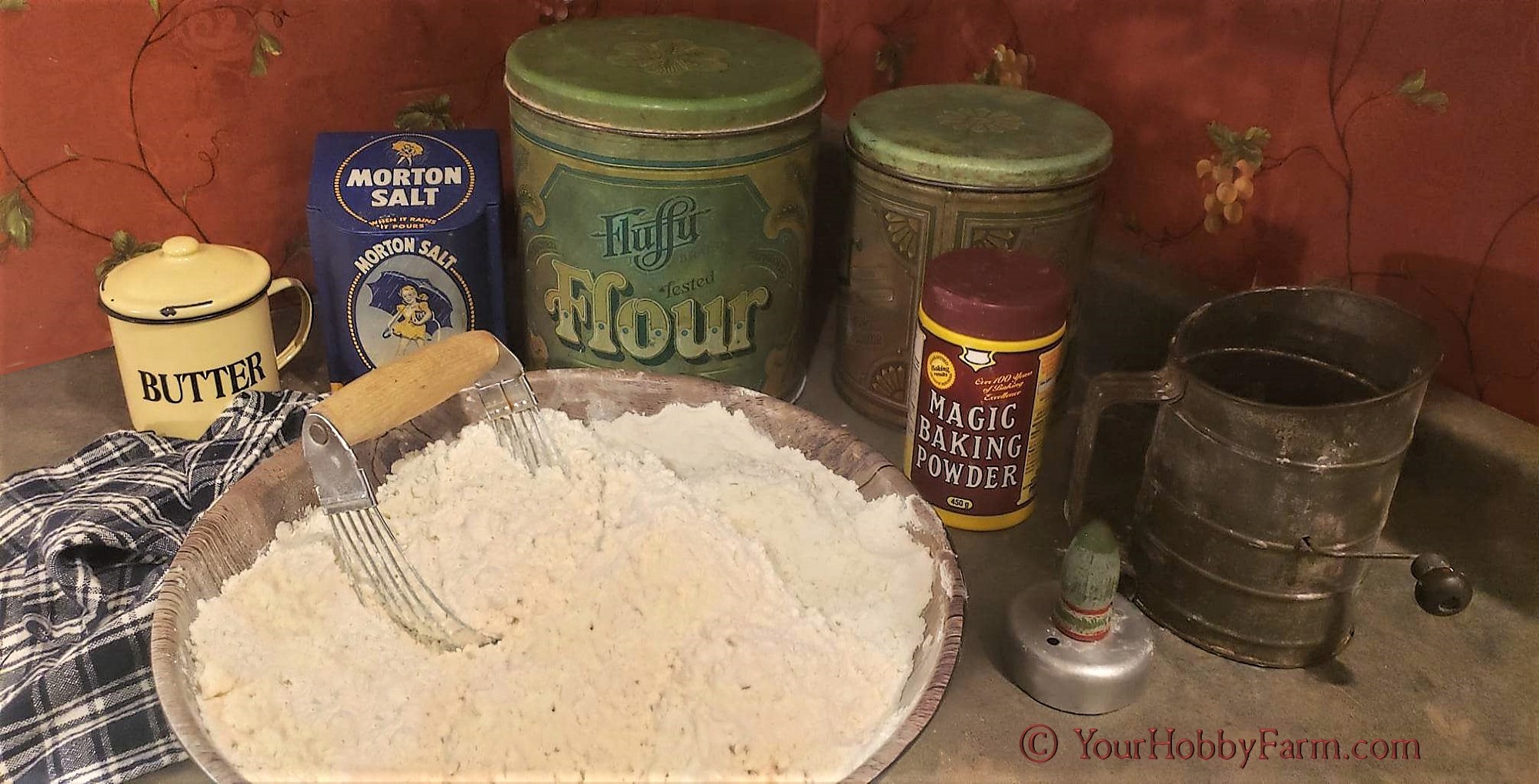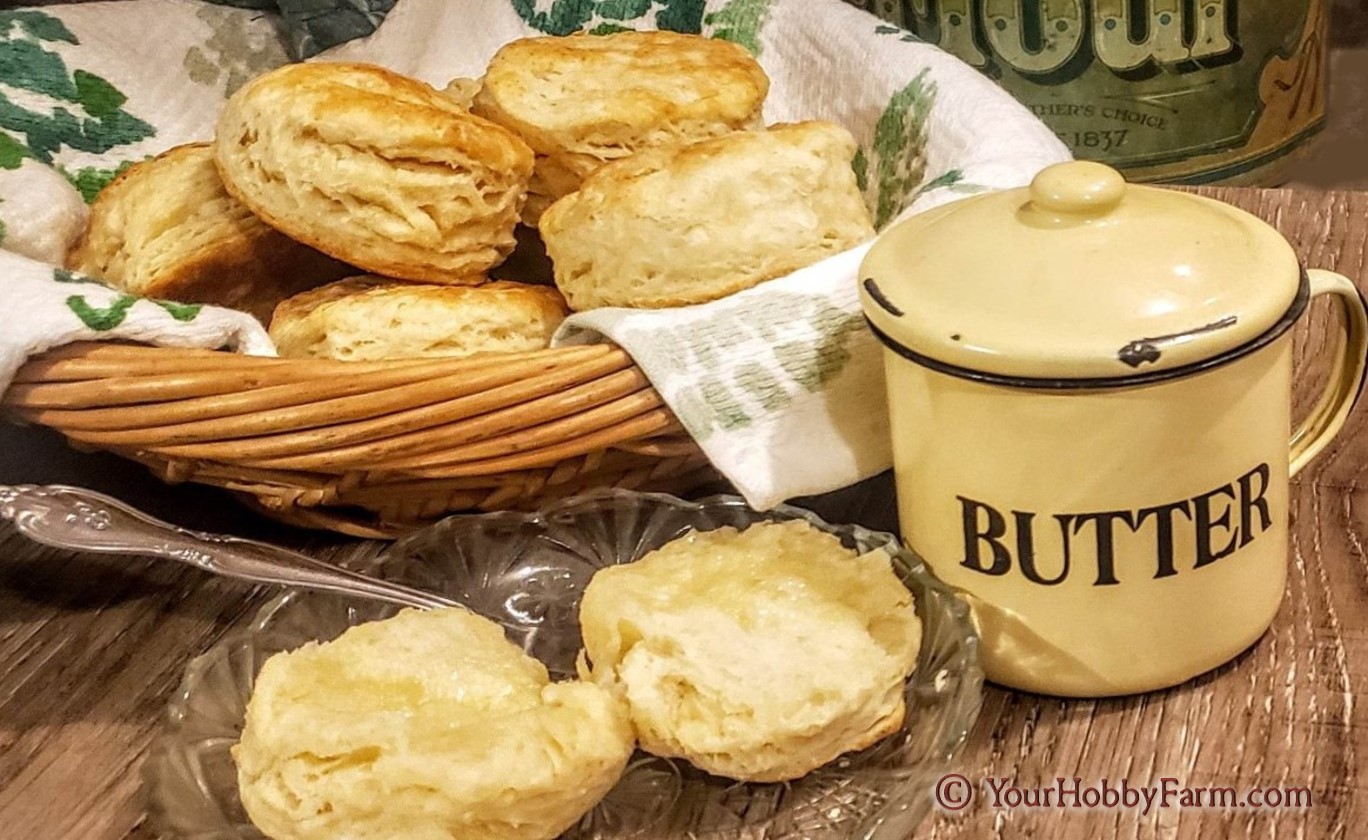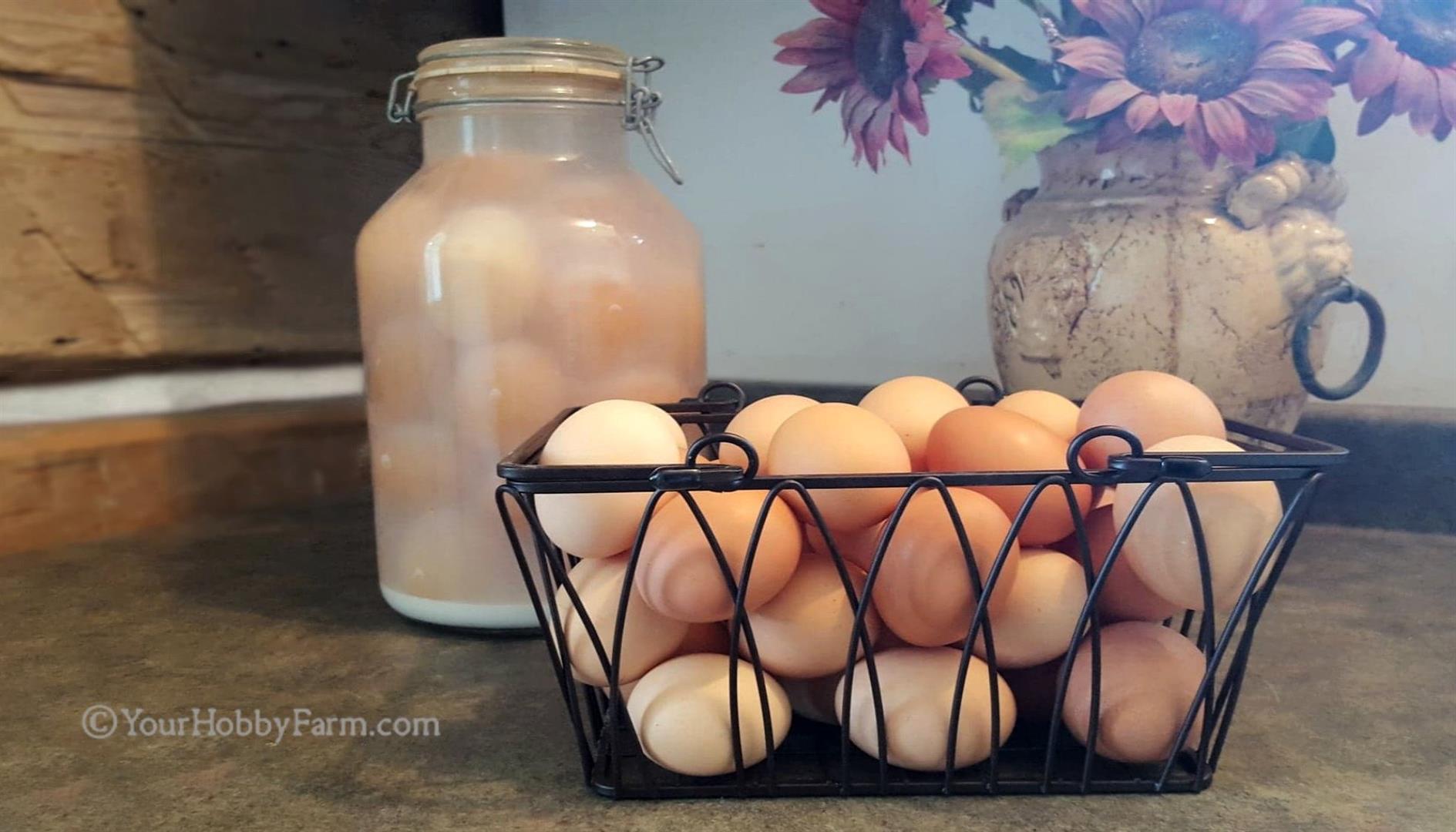Delicious, Moist Cornbread Recipe
There's nothing quite like warm, moist, melt-in-your-mouth cornbread! In our opinion humble, this homemade cornbread recipe is the best! And we'd like to share this three-generational favorite with you.
First, What Is Cornbread?
Cornbread is a type of quick bread or batter bread. It derives its name from the cornmeal which it's made from. And what is cornmeal? It's simply dried corn that has been ground to a coarse, medium, or fine meal or flour. Typically, a finer ground meal is used in cornbread, but not always. Cornbread also includes a few other simple ingredients, as you'll see in the cornbread recipe below.
Probably one of North America's oldest foods, cornbread is often associated with the cuisine of the Southern United States, but is enjoyed in Canada and in other countries as well.
What Does Cornbread Taste Like?
Before it's done baking and has emerged from the oven, the first thing that you'll notice is the sweet, buttery aroma of freshly baked cornbread that fills the air. It's hard to wait until it's done baking and cools down sufficiently, but the wait is worth it when you take the first bite!
What does cornbread taste like? The flavors of homemade cornbread may vary slightly due to differing ingredients that are used in different recipes. But from our experience, freshly baked homemade cornbread has a soft corn flavor, somewhat sweet, but not overly so, a bit reminiscent to caramelized butter, and some would describe a slightly nutty in flavor as well.
The truth is, since there are a variety of cornbread recipes, their flavors can vary from recipe to recipe, depending on the ingredients used. This can depend on personal taste, family traditions, or locations. There is no right or wrong when it comes to cornbread taste, and the mildness of its flavor lends itself to being used in a variety of ways.
Is Cornbread Gluten Free?
Many people are wondering about gluten free cornbread, or asking, is cornbread gluten free? Great question!
Here are the basics: cornmeal is naturally gluten-free because it is made from dried corn kernels which don't contain gluten. Having said that, be sure to check that the cornmeal you use is certified gluten-free because care has been taken to avoid cross-contamination in the mill. But as soon as you add any wheat flour to your cornbread recipe, then, unfortunately, it's not gluten free.
But the good news is that you can easily make gluten free cornbread out of this recipe! It may require just a bit of experimenting to get the cornbread recipe just the way you like it, but we'd suggest simply using the gluten-free flour that works best for you instead of the wheat flour that this recipe calls for. Then you'd have your own gluten free cornbread recipe! We wouldn't be surprised if you'd be quite pleased with the results!
Need a Great Cornbread Recipe? Here You Go!
This recipe has endured the test of time and it's a favorite of those who have eaten it! Lightly sweetened, soft, moist, and not too crumbly, this cornbread recipe pairs wonderfully with both savory or sweet dishes. We're happy share it with you!
Our Best Homemade Cornbread Recipe
First, preheat the oven to 400°F.
Ingredients:
Smaller Size: for a 9x9 inch square baking dish, or *10 inch cast iron skillet
Dry Ingredients:
- 1 1/4 cups All-Purpose Flour (or your choice of gluten-free flour)
- 1 cup Cornmeal
- 1/4 cup Sugar
- 1 tablespoon Baking Powder (aluminum free baking powder)
- 1/2 teaspoon Salt
Wet Ingredients:
- 2 large Eggs
- 1 cup Milk (or milk substitute)
- 1/4 cup Oil (mild flavored oil of your choice)
Larger Size: for a 9x13 inch rectangle baking dish, or *12 inch cast iron skillet
Dry Ingredients:
- 2 cups All-Purpose Flour (or your choice of gluten-free flour)
- 1 1/2 cups Cornmeal
- 1/2 cup Sugar
- 2 tablespoons Baking Powder (aluminum free baking powder)
- 1 teaspoon Salt
Wet Ingredients:
- 4 large Eggs
- 1 1/2 cups Milk (or milk substitute)
- 1/2 cup Oil (mild flavored oil of your choice)
Instructions:
- Preheat oven to 400°F.
- Grease baking dish or pan with butter or lard.
- Separately, combine the dry ingredients, then the wet ingredients.
- Combine and mix the combined with ingredients and the dry ingredients together just until moistened, small lumps are fine.
- Pour the batter into pan or skillet.
- Bake for 20 to 25 minutes, until golden on top.
- Don't over bake or your cornbread will turn out dry. Check for doneness by inserting a thermometer probe which should be 195°F to 200°F at the center. Or you can test by inserting a knife into the center. If it comes out with batter on the knife, bake it for a couple more minutes. If it only has slightly moist streaks, your cornbread is done.
- Remove your cornbread from the oven. This step is important: cover with a tea towel and allow it to rest for at least 15-20 minutes to finish the baking process. It also allows it to cool down sufficiently for serving.
Helpful Tips:
* For cast iron cornbread: If you're planning on baking cornbread in cast iron, here are measurements to keep in mind when converting from a glass baking dish to your skillet. While the square inches are not exact, these work fine.
9x9 inch baking dish = 81 sq. in. vs.
10 inch cast iron skillet = 79 sq. in.
9x13 inch rectangle baking dish = 117 sq. in. vs.
12 inch cast iron skillet = 113 sq. in.
Here's a helpful link for calculating or converting pan sizes.
Another note: When making cornbread, Grandma taught us that, when recipes called for shortening in cornbread, replacing it with oil made a more moist, less crumbly cornbread.
What to Add to Cornbread?
Here Are a Few Ideas for Inspiration!
When you consider things to add to cornbread, or cornbread "add-ins" or "mix-ins" as they're sometimes called, the sky's pretty much the limit! For starters, here are some ideas to try for what to add to cornbread!
• Green Chile and Cheddar Cheese: 1/2 cup of chopped green chiles and 1 cup of shredded cheddar cheese.
• Cranberries and Orange Zest: 1 cup roughly chopped fresh or dried cranberries, 1 tablespoon of orange zest, fresh or dried.
• Sun-dried Tomatoes, Basil, and Parmesan: 1 cup of diced sun-dried tomatoes, 1 tablespoon of minced fresh basil, and 1 cup shredded parmesan cheese.
• Maple and Walnuts: replace the sugar in the recipe above with 1/2 cup pure maple syrup, and add 1 cup roughly chopped roasted walnuts. Then top servings with butter and drizzle of maple syrup.
• Bacon (or Cracklings) and Cheddar Cheese: 1 cup of crispy bacon broken in small pieces (or cracklings), 1 cup of grated cheddar cheese.
• Blueberry and Lemon Zest: 1 cup of fresh or frozen blueberries and the zest of 1 lemon or 1 tablespoon of dried lemon zest, if you have no fresh.
Be sure to visit What to Add to Cornbread for many more creative, delicious ideas! You'll be surprised at how many things to add to cornbread there are! We hope that these oodles of ideas will be a helpful springboard for your own creativity!
What to Serve Cornbread With?
What to serve cornbread with? When it comes to how to serve cornbread, there are so many ways!
How cornbread is served often depends on many things, including geographical location, the time of day, and personal taste.
Where I grew up, to our family, chili and cornbread were a natural pair! We'd also enjoy it with hearty soups, etc... But when I mentioned that to a friend where I live now, she made a horrified face, stating how awful that sounded to her! Where she grew up cornbread was served with maple syrup as a dessert!
Cornbread can be served as either sweet or savory bread. Other times it's served just plain, in all its soft, golden sweetness. Typically, in the United States, it's topped with butter or served alongside chili, soup, stew, chicken or pork... Well, cornbread goes with just about everything!
The Best Way to Store Cornbread?
How long does cornbread last? Well, that depends on how you store it and where you store it. The best way to store cornbread is in a covered container to preserve freshness and moisture as much as possible. Cornbread can be stored in 3 places, depending how soon you intend to eat it.
In the pantry or cupboard, cornbread can be stored in an airtight container at room temperature for 3 to 4 days, depending on the current temperature and climate in your location. It will tend mold faster in higher heat and humidity, so check on it in 1 to 3 days to make sure that it's still good.
Cornbread can also be kept in the fridge, in an airtight container, where it should be fine for up to a week.
To keep it longer, you can also freeze cornbread. When properly sealed in a heavy-duty freezer bag or airtight container, your frozen cornbread can easily last for 3 months.
How to Warm up Cornbread
When you're ready to enjoy your cornbread again, there is actually more than one best way to warm up cornbread!
In the Oven: You can warm up your cornbread in the oven at 350°F for about 10 to 15 minutes. Make sure it's in a covered, ovenproof container so that your cornbread does not dry out. Buttering it before heating the cornbread gives it an added richness.
In a Toaster or Toaster Oven: Another way to warm up cornbread is to slice your pieces of cornbread in half and pop it into the toaster or toaster oven.
In an Instant Pot: If you're looking for another 'best' way to warm up cornbread is in the instant pot! This is a great way to reheat all kinds of baked goodies in a relatively short time, while maintaining the original freshly baked taste, the steam that it uses will keep the cornbread from drying out better than other methods.
To warm up the cornbread in the instant pot, place the cornbread in a small baking dish or other heat-resistant container, and cover to retain the moisture. Put your container of cornbread into your instant pot, add water to the bottom of the instant pot, and choose the “keep warm” or “slow cook” mode. Your moist, yummy cornbread should be ready to enjoy in a matter of minutes!
On the Stovetop: Pre-warm your pan on low heat, with butter coating the bottom. Place your pieces of cornbread in the pan and cover to keep in the steamy moisture. Turn the pieces on their sides several times to warm evenly, and watch that it doesn't burn or dry out. When it's thoroughly warmed your cornbread is ready to enjoy.
On the Woodstove or Over the Campfire: And last, but definitely not least, another wonderful way to heat up your cornbread, if you have access to either of these options, is to place it in a covered cast iron skillet or dutch oven and warm it up on top of a wood stove or over a campfire grate. Adding butter to the bottom of the cast iron and covering the pan to capture the steamy heat will result in a delicious, rustic treat!
Ways to Use Leftover Cornbread
Looking for ways to use leftover cornbread? Here are a few...
Years ago on the farm, Grandma used to make a delicious, wonderfully moist Cornbread dressing/stuffing to go with the holiday turkey or chicken. She used a recipe that had been passed down from her Mama... Unfortunately, I don't have the exact recipe that Grandma used, but as I remember, it was a lot like this Cornbread Dressing recipe.
I do remember that she'd crumble in the cornbread instead of cubing it as in this recipe. The other flavors that I remember were celery, onion, sage and a bit of garlic, perfectly balanced together and very moist from the turkey's juice.
Another great way to use leftover cornbread could be in a casserole such as this Leftover Cornbread Casserole. And this Cowboy Casserole with Cornbread and Chicken recipe utilizes leftover rotisserie chicken and leftover cornbread. Or a refreshing layered Cornbread Salad on a warm summer day...
You can make Cornbread Croutons to add to chili or a salad. Pork Loin with Apple-Cornbread Stuffing has gotten some great reviews. And, mouth-watering Turkey with Cornbread-Stuffing Waffles topped with gravy and cranberry sauce is a perfect way to use holiday leftovers!
And last but not least, another suggestion on how to use leftover cornbread is a Southern comfort food: cornbread in buttermilk or milk, referred to as "crumble-in".
This hearty snack of cornbread saturated with milk is loved in the Southern United States, from Appalachian West Virginia to the heart of Texas. Cornbread and milk, or cornbread in buttermilk, can be served for breakfast, lunch, or a bedtime snack, whenever you need a tall glass of soggy Southern comfort.
Different Types of Cornbread
And speaking of variety, one of the variants of the different types of cornbread is how it's prepared or cooked. We're all familiar with the baked version, but cornbread is also fried, grilled, deep-fat fried, boiled, and steamed.
Different types of "cornbread" would also include Johnnycakes (cornmeal flatbread, also known as Journey Cake, Johnny Bread, Hoecake), Hush Puppies, Cracklin’ Bread, Corn Muffins, Cornbread Sticks, Corn Tortillas, Polenta, and more! And Cornbread Waffles with Chili is another great example of a creative type of cornbread.
Think outside the box! This cornbread recipe can be used as a casserole topping like Tamale Pie, or as a bottom as used in these delicious ways: Skillet Cornbread Pizza or Mozzarella Cornbread Pizza. So, where you put the cornbread matters as well!
Why are There Different Colors of Cornbread?
Just like various colors of corn chips, cornbread can be made in different colors as well. Corn comes in many beautiful colors including white, yellow, red, blue, and jeweled kernels. When these different colors of corn are dried and ground to make cornmeal, the products made with the cornmeal reflect the colors of the corn that was ground.
The various colors of cornmeal may look different, but their tastes are similar and they can be interchangeable in baking. The grind, texture, or color that you choose is a matter of preference.
The various grinds will affect the texture and thickness of the batter and your resulting baking. Medium to coarse grinds provide a crumblier, crunchier, courser texture of cornbread, while a finer, consistently sized grind results in a more delicately textured cornbread.
This bountiful grain is not only delicious and healthy, but beautiful as well! Pretty a-maize-ing! Wouldn't you agree? Ha! A-maize... Wait. 🤔 Maize...? Corn...?
Pardon the rather corny joke, but seriously, what's the difference between corn and maize?
The difference between maize and corn? Glad you asked! Here's the short answer: Corn and maize are two terms, generally used for the same cereal grain. In North American English, we usually call it corn. However, where the British English vernacular is used, it's called maize. While these two words are often used interchangeably, they can have substantially separate applications, with a few other differences as well.
The Not-So-Corny History of A-Maize-ing Cornbread
Aww, shucks, enough with the farm puns and let's get back to the history of corn and cornbread, shell we? 🙄
The earliest physical historical evidence for domesticated maize, which many of us refer to as corn, dates back several thousand years. It was widely used in both North and South America by the indigenous peoples as a staple part of their diets. Their ability to dry corn preserved it for later use. Then it was shelled, ground and cooked in various ways.
Cornbread is probably one of America's oldest foods. Both North and South American Indians dried or roasted corn and ground it into a meal which they used to make porridge and bread. This first version of cornbread or corn cakes was basically ground corn, or cornmeal, mixed with water and some salt, and perhaps a few other ingredients as well, depending on where they lived and what was available.
Cornmeal was a precious gift from the American Indians to the first European settlers, as it helped those colonists survive the harshness of the first years. Over time, European settlers modified the original ways cornbread was made, as did other groups of settlers, according to their own tastes and preferences. Their adaptations reflected the cooking style of their homelands, adding ingredients, like wheat, which they had brought with them from overseas.
From Indian Bread, or Corn Pone and Hot Water Cornbread, this amazing, basic food has creatively morphed over the years into multiple forms. Today there are so many diverse, yet favorite, ways this historic corn-based batter bread is used! What's your favorite?
Translate This Page!
Traduire Cette Page!
¡Traduzca Esta Pagina!



Piping Rock©
Bringing you the highest quality In hundreds of health care and life-enhancing natural products at the
lowest cost to you!
high reviews, crazy deals,
happy, healthy customers!
Click here and save today!
Business Appreciation
* This website is not affiliated with
Piping Rock

Supporting our local feed mills
Meunerie Alexandria Milling
613-525-1973
Great Products • Great Prices
Great Service
Click the pic for their
facebook page!
Meunerie Alexandria Milling
Established in 1962 by The Massie Family
Email: Alexandriamilling@hotmail.Ca
475 Massie Crescent
Alexandria, Ontario, Canada
~~~
Small Business Appreciation
* This website is not affiliated with
Meunerie Alexandria Milling

